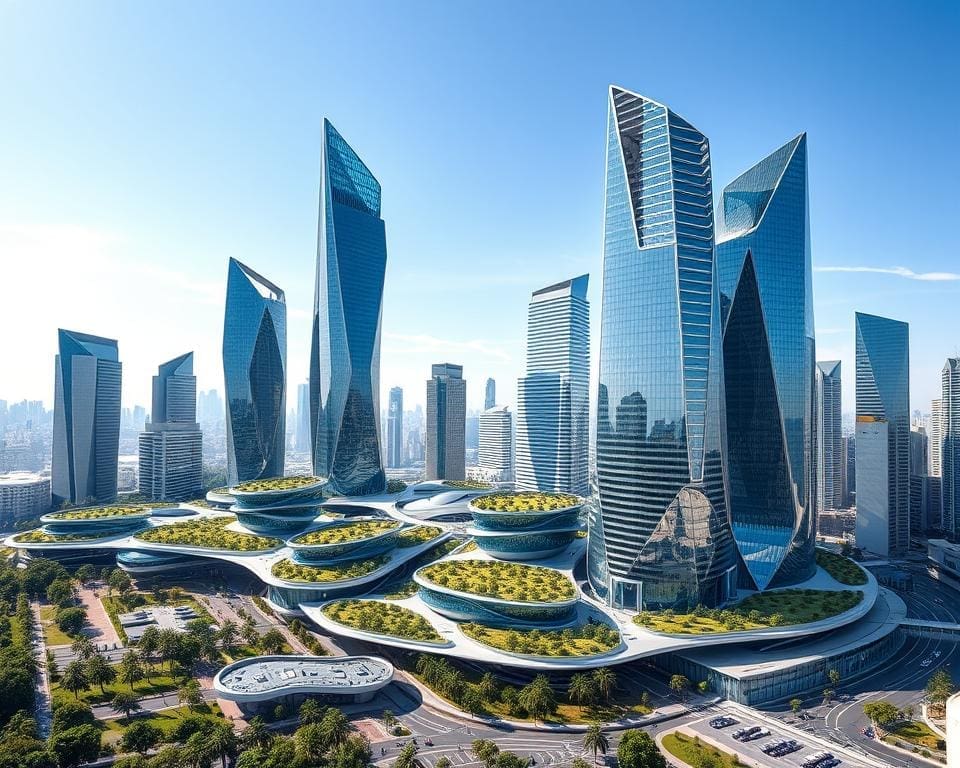Norman Foster, a preeminent British architect, has considerably influenced the architectural landscape of the United Kingdom. Renowned for his innovative designs, he embodies the essence of modernisation and beauty in architecture. His vision transcends aesthetics, presenting a holistic approach that emphasises functional urban development and sustainability. As the mind behind iconic British skylines, Foster’s architectural design principles not only enhance urban environments but also significantly improve the quality of life for residents. In the sections that follow, we will delve into the key architectural contributions of Foster and the enduring legacy he leaves in British architecture.
Introduction to Norman Foster and His Vision
Norman Foster, a titan of British architecture, was born on June 1, 1935, in Manchester. His educational journey at the University of Manchester and Yale University laid a strong foundation for a career characterised by innovation and vision. In 1967, he established Foster and Partners, a firm dedicated to pioneering modern architecture that resonates with the fabric of its surroundings.
Foster’s vision revolves around creating spaces that not only promote wellbeing but also foster a harmonious relationship with the environment. His architectural philosophy emphasises sustainability, showcasing a commitment to eco-friendly practices. Advanced technology and innovative materials play a crucial role in his designs, setting a benchmark in modern architecture.
- Integration of design and sustainability
- Focus on enhancing user experience
- Utilisation of cutting-edge technologies
Renowned for numerous high-profile projects, Norman Foster’s work not only exemplifies his mastery of form and function but also acts as a catalyst for positive urban transformation. His contributions to British architecture serve as a testament to the power of thoughtful design, inspiring future generations to engage in the continual evolution of architectural practice.

Key Architectural Works That Define British Architecture
Norman Foster’s influence on British architecture is unmistakable, with a portfolio replete with iconic buildings that reflect both innovation and tradition. His architectural design principles seamlessly blend modern functionality with a profound respect for the past.
Among the standout projects, the HSBC Building in Hong Kong exemplifies the potential of architectural design to transcend borders while exemplifying high-tech aesthetics. This structure, although situated in Asia, resonates with British architectural sensibilities, showcasing a dynamic facade that invites comparisons to other modern landmarks.
The Millennium Bridge serves as another testament to Foster’s vision. Connecting the heart of London with its vibrant cultural scene, this pedestrian bridge embodies not only structural genius but also a contemporary approach to urban connectivity, enriching the city’s architectural palette.
Foster’s innovative refurbishment of the Reichstag building in Berlin has initiated a dialogue surrounding preservation and modernisation. This project illustrates his capability to harmoniously integrate new architectural designs within historical contexts, echoing a commitment to sustainable principles.
As each of these structures emphasizes, the essence of British architecture lies in its ability to adapt while remaining rooted in traditional values. Norman Foster’s work will undeniably inspire future generations of architects, challenging them to create structures that are as progressive as they are respectful of history.
Norman Foster: The Mind Behind Iconic British Skylines
Norman Foster’s approach to architecture embodies a visionary blend of aesthetics and functionality. The British architect constantly pushes the boundaries of design, aiming to create spaces that inspire and thrive in harmony with their environment. As the driving force behind Foster and Partners, his mission transcends merely constructing iconic buildings; it encompasses reimagining urban landscapes for future generations.
The Group’s Philosophy on Urban Development
Foster and Partners subscribes to a philosophy that prioritises livability in urban environments. This ideology champions the integration of public spaces with private structures, fostering interaction among community members. A prime example of this approach is the King’s Cross development in London, which showcases a complex web of mixed-use spaces, inviting residents and visitors alike to engage with their surroundings. By cultivating a vibrant atmosphere, these efforts reflect a deep commitment to elevating urban life.
Signature Styles and Innovative Techniques
Foster’s unique signature style stands out through the use of sleek lines and transparency, often employing materials such as glass and steel. This aesthetic not only defines his iconic buildings but also serves functional purposes. The incorporation of advanced technology plays a crucial role, highlighted by energy-efficient systems and smart-building management that showcase an environmentally conscious ethos. Techniques like passive solar design and climate control systems demonstrate his dedication to sustainability, setting an inspiring precedent for aspiring architects around the globe.
The Gherkin: A Symbol of Modern London
The Gherkin, officially known as 30 St Mary Axe, is a masterpiece of modern architecture completed in 2003. This striking building has transformed the London skyline with its unique and iconic shape, becoming synonymous with contemporary British design.
Innovation defines The Gherkin’s design. Its energy-efficient features, such as a natural ventilation system, significantly reduce the need for conventional air conditioning. This thoughtful approach showcases a commitment to sustainability, integrating cutting-edge techniques with an eye for aesthetic appeal.
The relationship between The Gherkin and its urban environment cannot be overstated. It not only enhances the London skyline but revitalises the surrounding area, making it a beacon of modern architecture. Walk past this architectural gem, and one can’t help but appreciate how it stands as a testimony to Norman Foster’s vision, exemplifying beauty and functionality in an ever-evolving city.
Sustainable Architecture and Future-Focused Design
Norman Foster stands at the forefront of sustainable architecture, advocating for practices that prioritise both environmental stewardship and innovative design. His approach integrates eco-friendly structures into urban development, paving the way for a greener, more sustainable future.
Foster’s Commitment to Eco-Friendly Structures
The dedication of Foster and Partners to sustainability is evident in their use of renewable energy sources and efficient material usage. Their projects exemplify the importance of eco-friendly structures that not only function effectively but also minimise environmental impact. One notable example is the Bloomberg Europe headquarters, designed with advanced green technologies that significantly reduce carbon footprints. This commitment sets a benchmark within the architectural realm, inspiring others to follow suit.
Impacts of Sustainable Architecture on Urban Landscapes
The adoption of sustainable architecture has profoundly influenced urban landscapes. By championing eco-friendly design, Foster has encouraged developers and architects to incorporate sustainable practices into their visions. This transformation enhances not only the environmental integrity of cities but also their aesthetic value, fostering a sense of community and well-being. The increasing recognition of buildings as vital components in the fight against climate change urges cities toward sustainable futures.
The Legacy of Norman Foster in British Architecture
Norman Foster’s remarkable contribution to British architecture is a testament to his innovative spirit and visionary mindset. His signature structures, characterised by a seamless blend of aesthetics and functionality, have redefined urban skylines across the nation. From the iconic Gherkin to the sustainable developments spearheaded by his firm, Foster’s architectural design continually pushes the boundaries of what is possible, inspiring future generations of architects.
Beyond his physical creations, Norman Foster has played a pivotal role in championing sustainable practices within the industry. His commitment to eco-friendly design principles has not only set a benchmark for contemporary British architecture but also sparked a transformative movement towards greener urban environments. This legacy of sustainability and renewal reflects Foster’s deep understanding of the pressing challenges faced by modern cities, making him a key figure in the discourse surrounding the future of urban planning.
As cities in the UK evolve alongside technological advancements, the philosophies promoted by Norman Foster continue to guide architects in their pursuit of innovative solutions. His influence resonates deeply within the landscape of British architecture, ensuring that his forward-thinking vision remains central to discussions around urban development for the years to come. Indeed, the legacy of Norman Foster is not merely in the structures he has built, but in the ideals he has instilled within the architectural community.








